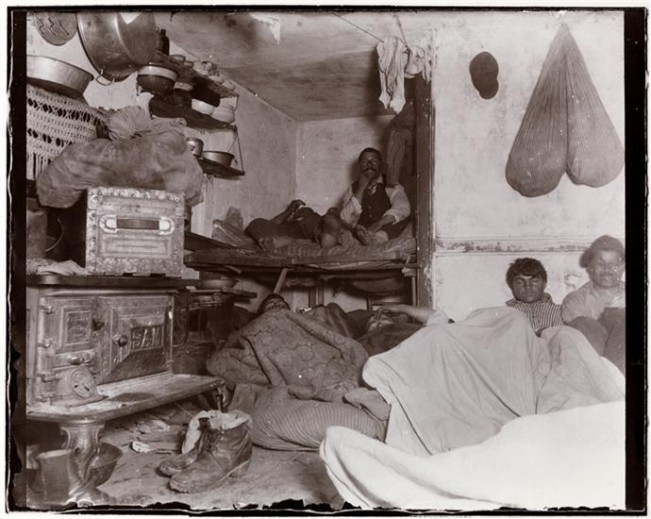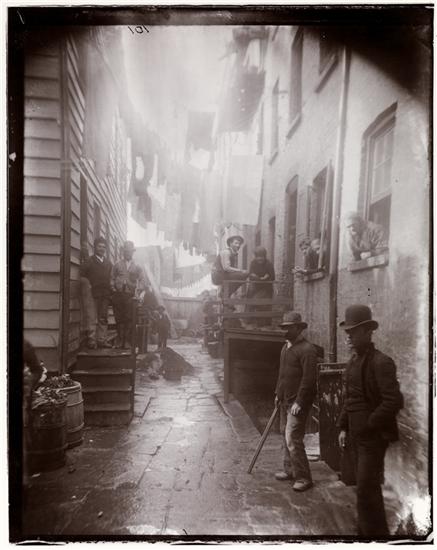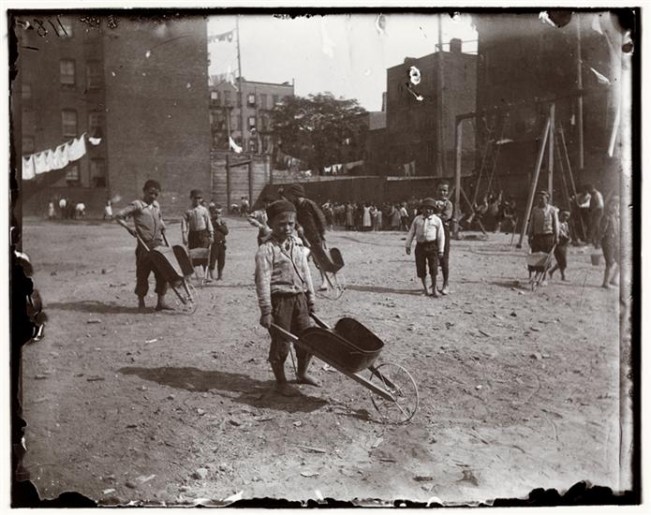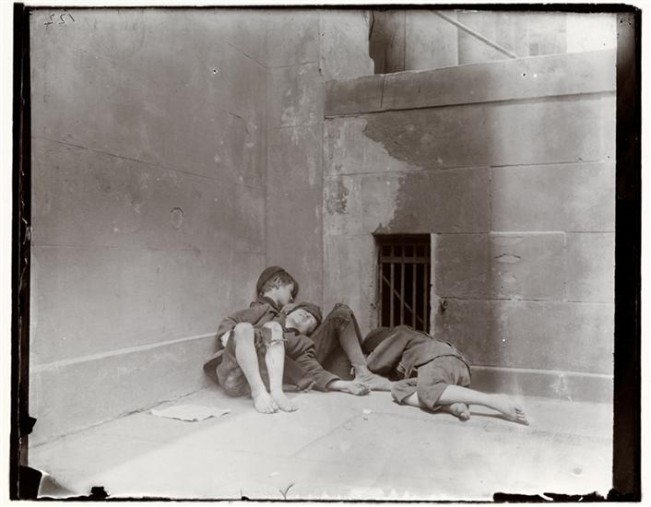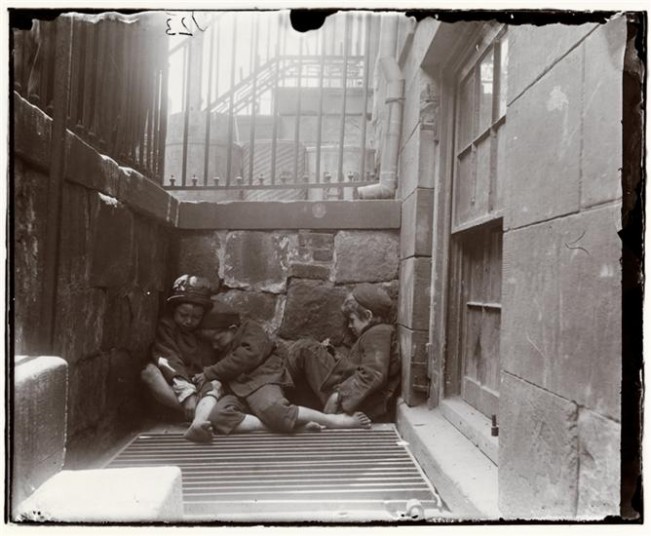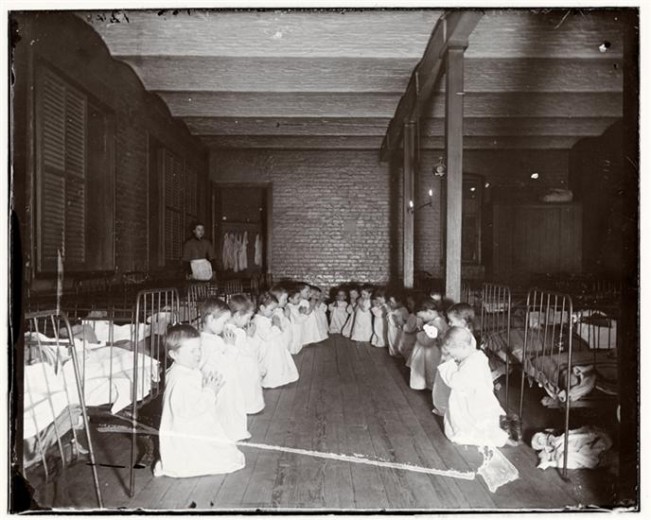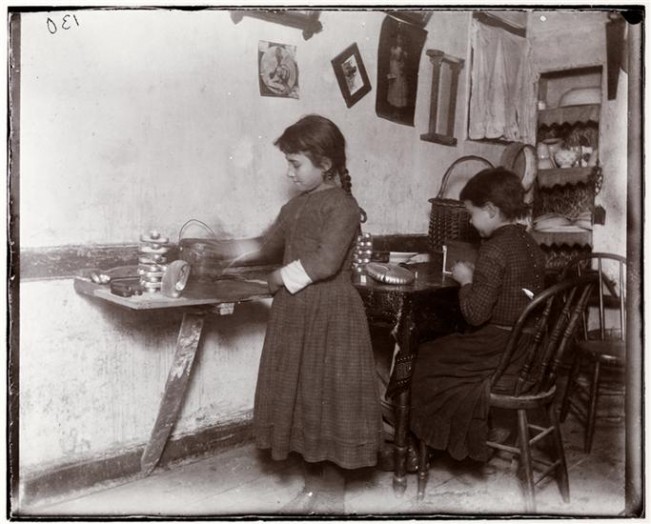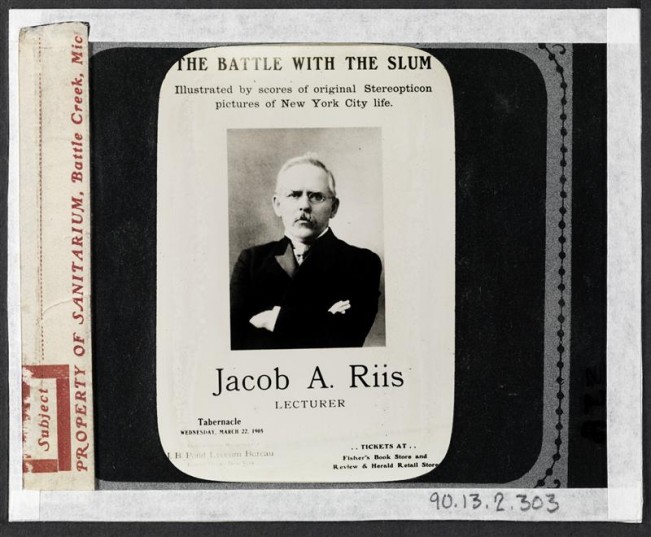Jacob A. Riis: Revealing New York’s Other Half
This photograph was taken blocks away from where my daughter lives on the Lower East side. The mental juxtaposition of New York tenement life at the turn of the century and the gallery, shopping, and foodie scene of that neighborhood today is a bit staggering. But photographer Jacob A. Riis put our immigrant legacy into perspective, shining a light into cracks and crevices that were rarely captured on film and giving us an almost sensory experience of what we might have encountered had we been born a century earlier.
The Museum of the City of New York is shining a light on Jacob A. Riis with the exhibition, Jacob A. Riis: Revealing New York’s Other Half, a one-of-a-kind retrospective of this social reformer and pioneer of photojournalism that features photographs by Riis and his contemporaries, as well as his handwritten journals and personal correspondence. The exhibition will run through Sunday, March 20, 2016.
This is the first major retrospective of Riis’s photographic work in the U.S. since the City Museum’s seminal 1947 exhibition, The Battle with the Slum, and for the first time unites his photographs and his archive, which belongs to the Library of Congress and the New York Public Library.
Riis was the first to use flash photography, a nascent technology, for a social purpose – to reveal to New York’s middle and upper classes the squalid living conditions of the poor and to galvanize action on their behalf. His 1890 book, How the Other Half Lives: Studies Among the Tenements of New York, his articles as a reporter, and his illustrated lectures of the slums here and throughout the country prompted fellow reformer Theodore Roosevelt to call Riis “New York’s most useful citizen.”
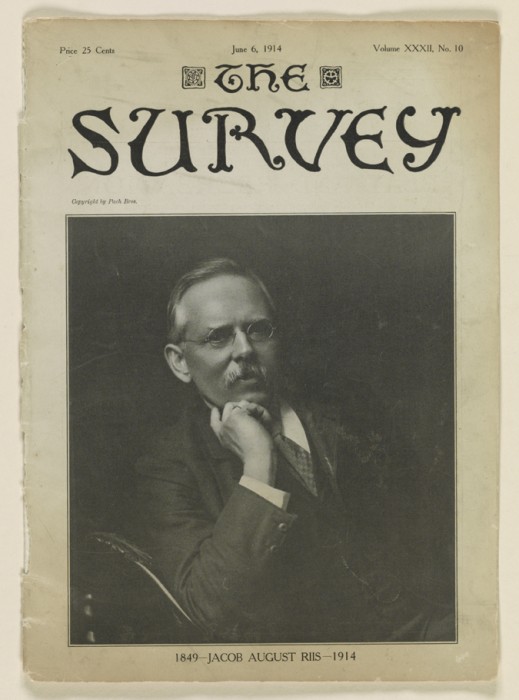 Born in Denmark in 1849, Riis came to New York City in 1870 and for several years experienced poverty firsthand. Hired as a police reporter in 1877 for the New York Tribune, he wrote about crime, disaster, and misfortune in the tenements, until 1884, when he turned his attention to housing reform. With the publication of the bestselling How the Other Half Lives, Riis became a national spokesman for the immigrant poor of American cities. He deftly entertained and educated his audience with stories and images advocating for advances in housing, education, immigration policy and public health until his death in 1914.
Born in Denmark in 1849, Riis came to New York City in 1870 and for several years experienced poverty firsthand. Hired as a police reporter in 1877 for the New York Tribune, he wrote about crime, disaster, and misfortune in the tenements, until 1884, when he turned his attention to housing reform. With the publication of the bestselling How the Other Half Lives, Riis became a national spokesman for the immigrant poor of American cities. He deftly entertained and educated his audience with stories and images advocating for advances in housing, education, immigration policy and public health until his death in 1914.
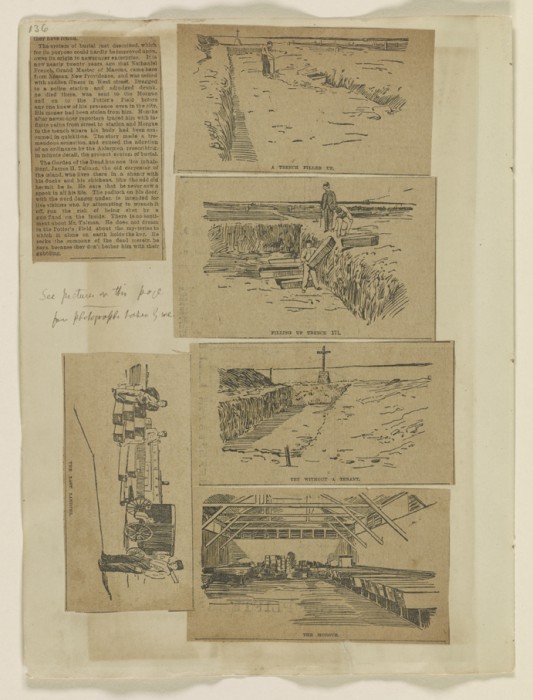 Revealing New York’s Other Half is the first major retrospective of Riis’ photography in the United States in well over 50 years. Visitors to the exhibition will experience a recreation of Riis’ famous and innovative lantern slide lecture “How the Other Half Lives,” which will provide the potent experience of viewing the photographs as contemporary audiences once did. It unites for the first time the City Museum’s Jacob A. Riis Collection of Photographs – the world’s largest archive of Riis’ images – with the Jacob A. Riis Papers from the Library of Congress and the New York Public Library. With photographs and letters, scrapbooks, manuscripts, and printed materials, the exhibition presents Riis’ career in full.
Revealing New York’s Other Half is the first major retrospective of Riis’ photography in the United States in well over 50 years. Visitors to the exhibition will experience a recreation of Riis’ famous and innovative lantern slide lecture “How the Other Half Lives,” which will provide the potent experience of viewing the photographs as contemporary audiences once did. It unites for the first time the City Museum’s Jacob A. Riis Collection of Photographs – the world’s largest archive of Riis’ images – with the Jacob A. Riis Papers from the Library of Congress and the New York Public Library. With photographs and letters, scrapbooks, manuscripts, and printed materials, the exhibition presents Riis’ career in full.
“With this exhibition we seek to define Jacob Riis and illustrate why his life and work resonated so deeply across the five boroughs and the entire country,” said Susan Henshaw Jones, Ronay Menschel Director of the Museum of the City of New York. “One hundred years after his death, inequality remains an essential aspect of American life, and the story of Jacob Riis needs to be remembered. The City Museum is proud to illuminate his works and the man behind them once more.”
Curated by Bonnie Yochelson, art historian and former Curator of Prints and Photographs at the Museum of the City of New York, Revealing New York’s Other Half is divided into six sections that focus on various aspects of Riis’ life, work and legacy.
“Jacob Riis had a tremendous impact on society, photography and the history of New York City,” said Yochelson. “His work deserves to be revisited for its combination of historical importance and ongoing relevance today. As our city and our nation continue to struggle with inequality and its effects, this exhibition enables visitors to understand the story of the man who first illustrated life in New York City slums in the 19th century, providing a unique lens for viewing a present day issue.”
Riis’ photos made such an impact because they never failed to deeply shock his audience and demand their attention; the exhibition seeks to offer a similar experience, as his photos have lost none of their dramatic effect.
Revealing New York’s Other Half features over 125 objects including Riis’ personal papers, his many books, selections from his newspaper and magazine writing, handwritten manuscripts, and photography equipment, along with photographs taken and collected by Riis himself. In addition, 50 Riis photographic images will be on display, including vintage photographic prints, lantern slides, glass negatives, stereographs and more. Significant items on display include correspondence with Riis’ close friend Theodore Roosevelt on White House stationery, fundraising correspondence with Louise and Andrew Carnegie, and a Riis letter to humanitarian and author Lillian Wald.
The exhibition will be accompanied by a complete catalog of Riis’ photographs, the first of its kind, also entitled Jacob A. Riis: Revealing New York’s Other Half. Written by Yochelson and co-published by Yale University Press, the City Museum, and the Library of Congress, this major research endeavor complements the contents of the exhibition, with detailed entries on every photograph Riis produced or commissioned.
Revealing New York’s Other Half will travel to the Library of Congress in Washington, D.C. and Denmark, where it will be featured at museums in Copenhagen and Ribe.
About the Museum of the City of New York
Founded in 1923 as a private, nonprofit corporation, the Museum of the City of New York celebrates and interprets the city, educating the public about its distinctive character, especially its heritage of diversity, opportunity, and perpetual transformation. The Museum connects the past, present, and future of New York City, and serves the people of the city as well as visitors from around the world through exhibitions, school and public programs, publications, and collections. Visit www.mcny.org to learn more.
Posts on Lenscratch may not be reproduced without the permission of the Lenscratch staff and the photographer.
Recommended
-
Shinichiro Nagasawa: The Bonin IslandersApril 2nd, 2024
-
The International Women in Photo Association Awards: Lorraine Turci: The Resilience of the CrowMarch 16th, 2024
-
The International Women in Photo Association Awards: Rayito Flores Pelcastre: Chirping of CricketsMarch 14th, 2024
-
The International Women in Photo Association Awards: Louise Amelie: What Does Migration Mean for those who Stay BehindMarch 12th, 2024
-
Brandon Tauszik: Fifteen VaultsMarch 3rd, 2024

